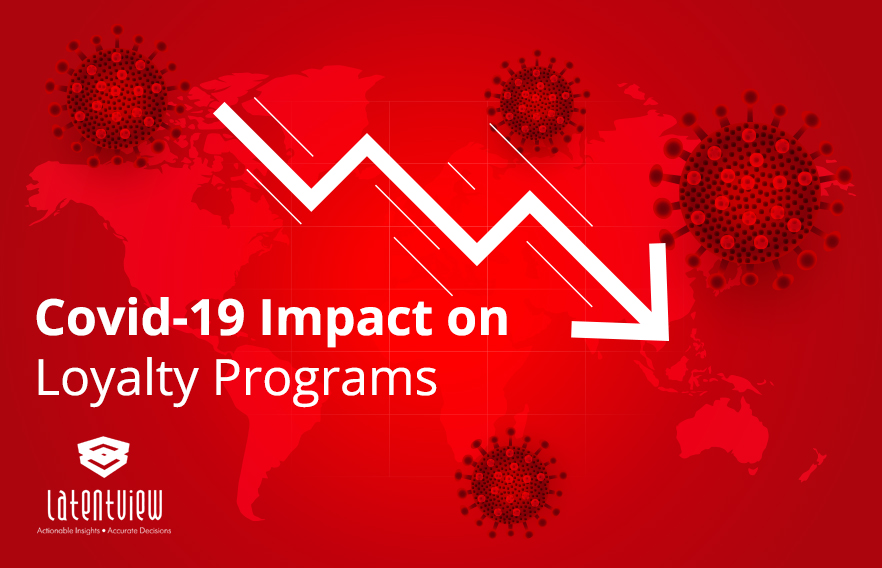The COVID-19 outbreak has had a dire impact on several industries across different sectors, derailing the global economy. According to a recent study, the Global GDP faces an approximate loss of 6.5 – 9.7% due to the pandemic. The financial ramifications to the economy and different industries are staggering, and companies are striving to find their footing amidst the changing landscape. As the crisis unfolds, marketers across the globe are struggling to adapt to the new reality, and keep their businesses relevant, if not profitable.
What is the new reality?
Customer behaviour has completely changed over the past months, with most people locked down within their homes. Looming economic uncertainty has forced many consumers to spend on essentials primarily. The pandemic has also rapidly accelerated automation and digitalization, with the e-commerce industry experiencing a resurgence in sales. Consumers are making as many purchases as possible online to avoid human contact.
Impact of COVID-19 on Loyalty Programs
Customer loyalty has become extremely volatile during these unprecedented times, with customer retention dropping drastically for most companies. The coronavirus has left two of the biggest proponents of loyalty marketing, the airline and hospitality industries, in complete shambles. With revenue losses upwards of hundreds of billions of dollars, these industries are trying their best to stem attrition amidst these challenging circumstances. Despite suffering as a hospitality brand, Hilton has postponed tier expiration for its loyalty program members, and points expiration has been pushed till the end of the year. In the airline industry, American Airlines has extended elite status for AAdvantage members until 2022, to keep its users satisfied and, in-turn, mitigate churn.
Across the loyalty landscape, several other loyalty programs are forced to extend point expiration dates and tier eligibility to allow members to keep their statuses despite decreased participation. Several redemption options are no longer relevant due to global lockdowns, and the possibilities in the redemption catalogue need to be shifted to meet consumers where they are – at home. Organizations such as Capital One have started expanding redemption options for cardholders to include alternative options such as food delivery and takeout. Furthermore, brands are resorting to new partnerships with other brands that are thriving. For example, American Express is enhancing rewards programs for their co-branded cards to include bonus rewards at U.S. supermarkets.
Since loyalty programs are known to drive customer retention, companies must focus on improving their programs to curb the negative impact of the virus. Adapting to the ‘new normal’ is key, and an effectively retooled loyalty program can go a long way in boosting a company’s prospects. Brands that are quick to rethink their rewards programs with new, disruptive approaches will be able to come out of this crisis relatively unscathed.
Best Practices to Combat COVID-19
Although having a loyalty program during these times is a great advantage, tweaking the program in the right ways can have a huge impact. Few brands have started to revamp their loyalty programs, but most have not responded proactively to the situation.
Here are some best practices that most brands can incorporate,
- During times like these, empathy is key. People do pay attention to how organizations are responding, and keeping in touch with your customers and letting them know that you care can forge strong relationships over the years. This is not the time to exploit the situation commercially, and brands must be careful not to hamper their brand image in pursuit of short-term gain. In a new study comparing different airlines’ response to coping with the pandemic, Spirit Airlines was ranked the worst as they did not protect their frequent flyers, charged an additional amount for masks, and did not limit their flight capacity.
- Extending or removing any expiration of points or tiers should ensure valuable customers do not get frustrated about losing their progress. Higher tier members form the core of most loyalty programs, and they will be the most affected if these necessary steps are not implemented. Since they contribute to a large chunk of the overall revenue, it is important to make sure that these members do not churn out of the program. Most leading airlines like Delta, JetBlue, etc. have carried out these changes in spite of the heavy losses they have been incurring this year.
- In a recent survey, 62% of customers mentioned that they would join a loyalty program if they knew the rewards had a positive social impact. New charitable redemption options can be added where customers can donate the points they have earned. A prime example of this is Microsoft Rewards, which recently launched the Give with Bing feature, a new way to support the causes users care about by just searching with the Bing search engine. Through this feature, Microsoft Rewards was able to donate hundreds of thousands of dollars to the CDC Foundation, a cause that is leading the fight against the novel coronavirus in the U.S.
- Making your loyalty program more fun and engaging by developing new brand engagement elements can drive users to re-engage, especially when most of the world is locked down. Users are trying to find ways to kill boredom and are constantly on the lookout for something fresh and interesting. Leaderboards for activities such as testimonials, blogs, and contests have proven to be successful in keeping participants engaged.
- Introducing Sweepstakes/Chance to Win Rewards can help members with low point balances also participate, with the chance of winning exclusive and unique rewards. These kinds of rewards not only reduce point liability for a brand but also enables users to engage in a fun and exciting way. Starbucks recently introduced games like Starland and Summer Game for Starbucks Rewards members, where members get a chance to win grand prizes using sweepstake entries.
- As opportunities to earn points has reduced, brands can encourage existing customers to act as brand advocates by incentivizing their reviews and referrals with points as part of the loyalty program structure. The Lenovo LEAP program recently experienced a high level of success with their refer-a-friend program.
- The unique nature of the market also allows brands to test extensively, delve into the changing attitudes, perceptions, and motivations of customers, and create new, nuanced customer segments. Introducing profiling quizzes to learn about customers’ preferences can enhance personalization and, in-turn, provide a more satisfying customer experience in the future. Awarding points to customers for completing surveys can also prove to be beneficial, as surveys can help fine-tune the different aspects of the program.
Conclusion
Every business should be questioning how loyalty has changed and forge out their own strategy to respond to the situation. Although companies want to return to growth immediately, it is imperative to focus on empathy during these tough times. The goal must be to build long-standing relationships with customers that stay strong long after the crisis dies down. Brands that consistently provide the best customer experiences and come up with new, innovative offerings will stay afloat.





